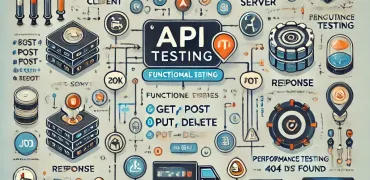Understanding the Complete API Lifecycle: From Design to Monitoring

In the world of modern software development, APIs (Application Programming Interfaces) have become an integral part of building scalable and efficient applications. From enabling microservices architectures to empowering third-party integrations, APIs are the backbone of the interconnected digital ecosystem. But creating a successful API involves much more than just writing code. It requires careful planning, design, testing, and ongoing monitoring to ensure it delivers a high-quality user experience.
This article will take you through the entire API lifecycle, highlighting the critical stages: Design, Mocking, Testing, Documentation, and Monitoring. We'll also mention tools like Doxify, which already supports design, documentation, and metrics, with mocking and testing capabilities coming soon.
1. API Design: The Blueprint of Your API
API design is the foundational step in the API lifecycle. A well-designed API ensures that it's user-friendly, consistent, and aligned with the needs of developers and stakeholders.
The design phase begins with defining the purpose of your API. Ask yourself, “What functionality will this API provide? Who are the consumers of this API? How will it scale in the future?” You should outline the resources (such as users, products, or orders) and the operations that the API will allow, like retrieving, updating, or deleting data. This is where using a standard like REST, GraphQL, or gRPC comes into play.
A crucial part of the design process is defining the API contract. This contract outlines how clients will interact with your API, detailing endpoints, methods (GET, POST, PUT, DELETE), parameters, and expected responses. Tools like Doxify simplify this process by allowing you to craft your API's design interactively, ensuring that your design is well-structured and consistent.
2. API Mocking: Build Before You Build
Before writing actual code, API mocking allows you to simulate the behavior of an API. Mocking helps developers and stakeholders visualize how the API will behave in real scenarios without the backend being fully developed.
For example, when building a new API, you can mock responses to demonstrate how data will flow. Developers can use these mock responses to build out the frontend and test functionality before the API is even live. Mocking also helps in rapid prototyping, enabling quicker feedback cycles from stakeholders.
While Doxify is working on integrating mocking functionality into their platform, other standalone tools like Mockoon or Postman can serve this purpose. Once Doxify adds mocking, it will offer an all-in-one solution for designing and validating APIs before actual implementation.
3. API Testing: Ensure Your API Works as Expected
Once you've moved past the design and mocking phases, it's crucial to thoroughly test your API. Testing guarantees that the API works as expected under various conditions, from normal usage to extreme cases.
There are several types of API tests you should conduct:
- Unit Testing: Validating individual endpoints and functions.
- Integration Testing: Ensuring the API interacts correctly with other systems.
- Load Testing: Assessing performance under high traffic.
- Security Testing: Identifying vulnerabilities that could expose sensitive data.
Comprehensive testing catches issues early in the development process, minimizing the chance of failure in production. As part of the API lifecycle, Doxify has plans to introduce testing features soon, allowing teams to conduct these tests within the same platform they use for design and documentation.
4. API Documentation: Make Your API Developer-Friendly
API documentation is often one of the most overlooked stages in the API lifecycle, yet it's one of the most critical. Proper documentation ensures that developers can easily understand and integrate with your API. It should clearly describe how to authenticate, the available endpoints, parameters, error codes, and include code samples.
Tools like Doxify are designed to help you create rich and detailed API documentation. By generating documentation directly from your JSON files, it ensures accuracy and reduces the risk of inconsistencies. Additionally, Doxify's documentation is interactive, which means developers can try out API calls directly from the docs, improving the developer experience.
High-quality documentation also aids in building trust with your API consumers. When developers find your API easy to navigate, they’re more likely to recommend it and return for future projects.
5. API Metrics and Monitoring: Keep Track of Performance
Once your API is live, your work is far from done. APIs need ongoing monitoring to track performance, ensure uptime, and spot any potential issues before they impact users. This is where API metrics come into play.
Metrics like response times, error rates, and traffic patterns help you understand how your API is performing in the real world. Monitoring tools allow you to detect anomalies, such as spikes in errors or slow responses, and take corrective action before users are affected. In addition to performance, you’ll also want to monitor security metrics, ensuring there are no unauthorized access attempts or breaches.
Doxify offers built-in metrics and monitoring capabilities, allowing teams to keep an eye on the health of their APIs in real-time. This ensures you can continuously optimize your API, improving both performance and user experience.
The Role of Doxify in the API Lifecycle
When it comes to managing the full lifecycle of an API, Doxify is a key player. Doxify simplifies API design, ensuring that APIs are user-friendly and well-structured from the start. Its documentation feature ensures that developers can easily understand how to interact with your API, reducing the integration time and lowering the learning curve. Moreover, Doxify’s future metrics and monitoring features will enable continuous performance tracking, helping teams keep their APIs reliable and secure.
Although mocking and testing capabilities are currently under development in Doxify, they promise to make it a comprehensive tool that supports every phase of the API lifecycle.
Conclusion
The API lifecycle is a continuous process of designing, mocking, testing, documenting, and monitoring. Skipping any of these steps can lead to poor performance, developer frustration, and security vulnerabilities. Tools like Doxify simplify many of these processes, making it easier to build, manage, and optimize APIs.
Whether you’re working on your first API or maintaining a complex microservices architecture, following this lifecycle will ensure your API remains reliable, secure, and user-friendly. And with Doxify already offering design, documentation, and metrics features, and promising upcoming support for mocking and testing, it’s a powerful platform for API management.



